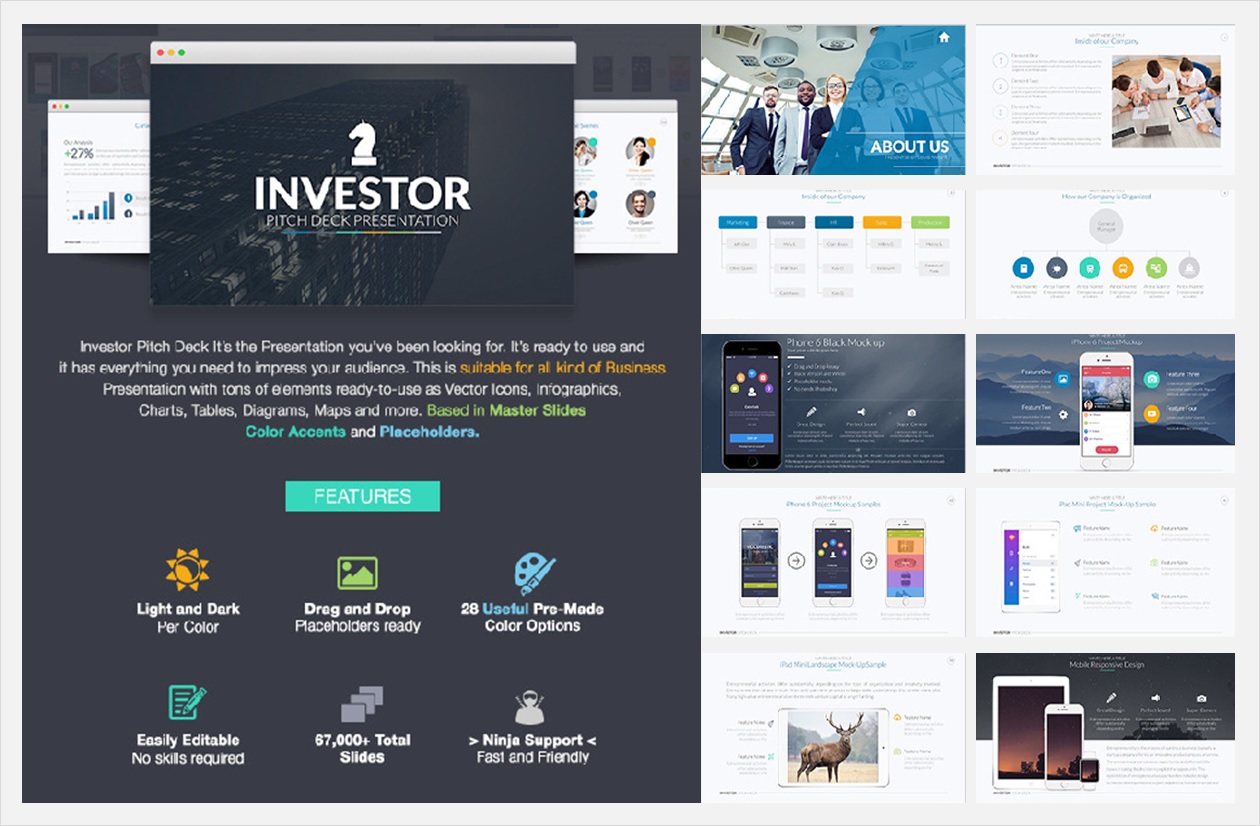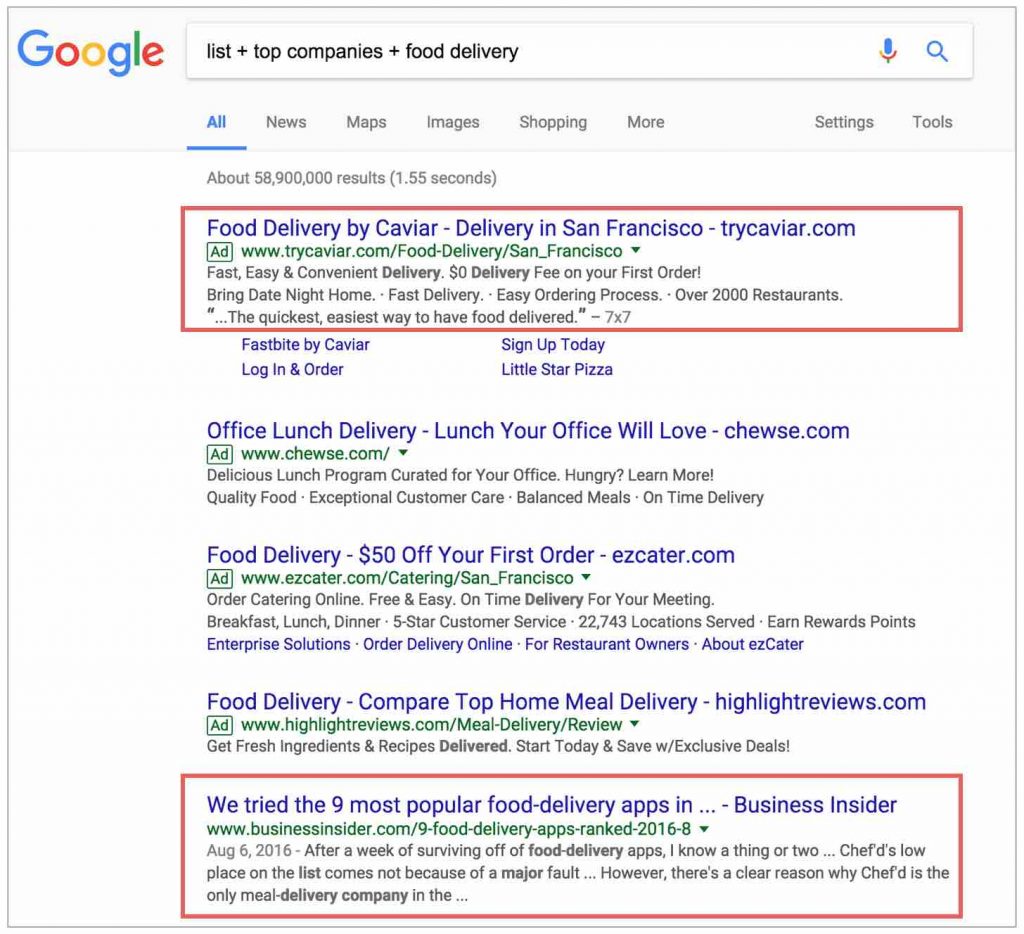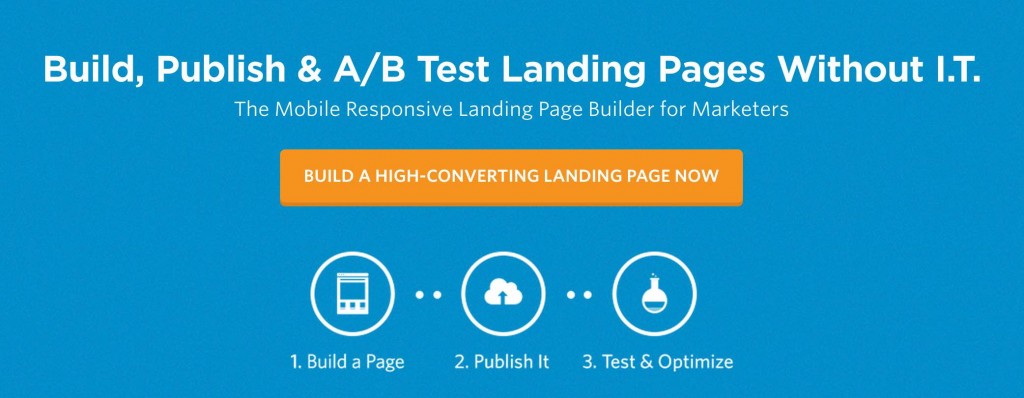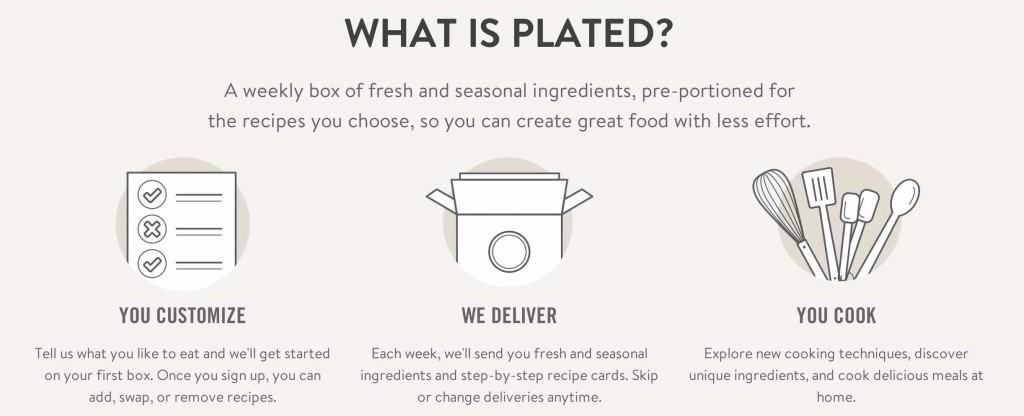 So you want to learn how to pitch an idea to your boss, a company, or even investor?
So you want to learn how to pitch an idea to your boss, a company, or even investor?
Well , you’re in the right place.
Because today, you are going to learn 21 actionable, science-backed strategies and techniques that will help you…
✅ Set yourself apart for an investor pitch, or a demo day (Yes, you’ll be up against a lot of other people, so it’s crucial for you to learn how to make an amazing impression fast).
✅ Nail that high-stakes meeting with your boss. Get him to say ”YES !’ to your amazing idea. Persuade him that what you have to say is far more important than the new emails popping out his iPhone screen.
✅ Introduce yourself in a way that grabs attention, and get people eager to know more about what you have to say (In as little as 15 seconds)
So buckle up my friend, and let’s get started 🚀
How to Pitch an Idea to Investors, Companies (Or Your Boss)
1. Know the Ask, Set Up Goals
2. Analyze Your audience & Identify Their ”Type”
3. Identify Who Has The Power (To Say Yes)
4. Spy On Your Competitors’ Ideas Using Google
5. Have a Mission
6. Use the 3W Formula to Refine Your Idea
7. Wrap Your Message Up in One Sentence (Yes, Really)
8. Craft the Perfect Elevator Pitch
9. Use This 3-Step Process To Introduce Yourself in 15 Seconds
10. Use the Grandma Test to Guarantee Anyone Can Understand Your Idea
11. Tie Your Idea to At Least One Of These 8 Foundational Desires
12. Tie Your Idea to Benefits Your Audience Cares About
13. Use Analogies
14. Puts Their Mind At Ease
15. Write Headlines To Reinforce Your Value Proposition
16. Give Them Reasons To “Buy” Your Idea
17. Use Key Authority Marks to Build Trust
18. Use GEC To Evaluate Your Idea’s Potential
19. Rehearse In Front of Real People, Get Feedback
20. Use These Techniques To Make a Great Impression When Talking
21. Analyze Your Audience and Adapt As You Speak
22. BONUS: Deliver an Amazing Pitch 🔥
The Definition of a Pitch
Pitch = set of activities intended to persuade someone to buy a product or take a specific course of action.
Idea pitch = “selling a business idea to strangers in the time one would spending riding an elevator with them”.
1. Know the Ask, Set Up Goals
You can’t focus on what needs to be done (aka laying out a strategy to pitch your idea), if you don’t know what you want to achieve. And that’s why you need to set up goals.
So first, write down your answer to the following questions:
What do you want your audience to do?
See, setting goals has two proven benefits (Latham & Locke, 2007):
▶ It increase motivation: giving people specific goals to achieve rather than telling them to do their best increases their motivation, persistence, and self-efficacy.
▶ It increases achievement: setting goals increase success rate. Studies have documented that that individuals with clear, written goals are significantly more likely to succeed than those without clearly defined goals.
Now that you know why you need a goal for your idea pitch, you need to understand what makes a solid goal. A Harvard study documented that a good goal includes the following three attributes:
👉 Specific (clear goals increase persistence, making individuals less susceptible to the effects of disappointment, and frustration)👉 Challenging (people are motivated the most when they think their actions will produce positive outcomes, and when they value these outcomes)
👉 Meaningful and valuable
Setting up goals = creating a blueprint guiding your steps toward the outcome you actually want.
Here, take a look at a few specific examples of good ”goals”:
Have your boss validate the 20% increase of marketing budget for next year.
Get prospects to accept your proposal, agree to a second meeting one month from now.
Present your idea to people that can get you a meeting with investors to get financial backing.
2. Analyze Your audience & Identify Their ”Type”
The reason of doing this is to identify relevant info about your listeners that will help you adapt your pitch in a way that appeals to them.
Now, you want to be doing two things:
First, analyze your audience in line with these three phases (Lucas, 1995):
Demographic Analysis
✅ Age, gender
✅ Culture (knowledge, behavior, attitudes, beliefs and values)
✅ Educational level (to help you chose your vocabulary and language style)
Attitudinal Analysis
✅ What do they like/dislike
✅ What do they believe are true or false
Environmental Analysis
✅ Seating arrangement
✅ No. of people likely to attend your pitch
Another way to do this is to use this simple market segmentation framework:
Second, determine your audience type (Reid, Kiefer, and Kowalski, 1994)
The “Lay” Audience
No special or expert knowledge. They usually need background information.
The “Managerial” Audience
Any background information, facts, or statistics needed to make a decision should be highlighted.
The “Expert” Audience
The most demanding audience in terms of knowledge, presentation, and graphics or visuals.
Write down your answers. The more you know about your audience, the better you’ll be able to address their needs and expectations.
3. Identify Who Has The Power (To Say Yes)
Who has the power to green light your idea?
Make a list of the people who will have exposure to your pitch, and identify:
✅ Who gets involved in decisions (who has the power to say Yes, let’s do this)?
✅ Do you have direct access to those decision-markers?
✅ If not, who do you have access to that can help you reach out to decision-makers later one (mutual connections)?
Trust me, you really don’t want to spend your energy making a pitch to people who aren’t empowered to pull the trigger.
4. Spy On Your Competitors’ Ideas Using Google
Think you’re the first one ever pitching that specific idea you have in mind?
Think again.
It’s very likely that you’re not the first one (and if you are, make sure to validate that there’s a market, aka people able and willing to pay for you have to offer).
The point of this technique is to evaluate how other people like you are actually pitching their own idea in the real-world.
You can use these search strings to specify your search query:
- [idea keyword] + [pitch]
- site:.edu + [idea keyword] + pitch
- list + top companies doing + [idea keyword]
Let’s take a look at a specific example.
Let’s say you have an idea about a food delivery service. You’re going to “spy” on your competitors to see how real-world companies offering similar services are actually pitching them:
Next, visit a webpage in the search results that is relevant to your expectations.
You could head over to a paid search result (“Food Delivery by Caviar”) , or an organic result (“We tried the 9 most popular food-delivery apps”) and identify how your competitors are selling themselves:
- What did you like / dislike about how these firms present themselves? Why?
- Which words do they use to describe the benefits of services/products?
- What elements of their value proposition, positioning or core benefits could you apply to your idea?
- What makes your idea different, and better, from what’s already on the market?
5. Have a Mission
“The best companies are almost always mission-oriented”. Sam Altman, President of Y Combinator (source).
If you don’t love and believe in what you’re building, you’re likely to give up at some point along the way.
Here are three examples:
“Belong anywhere”. Airbnb.
“Cook more. Live better”. Plated.
“We’re the creators of Bantam Bagels, and we’re on a mission to change the way you bagel !”
Try to tie your idea to a specific mission that will promises a transformation for your audience.
Ask yourself:
What’s the big idea that defines what I want to do?
6. Use the 3W Formula to Refine Your Idea (and Craft a Message They Can’t Ignore)
Here’s the giant, hairy problem we’re all facing when presenting ideas to people:
What will the audience remember when they walk out of the room?
For most people, it’s likely going to be… nothing (dreadful, isn’t it?). The 3W formula is a simple, 3-step process you can use to craft an irresistible message that actually gets remembered.
Who + Why + What
Who: Who is Your Target Audience
Like I mentioned in the strategy # 2:
Do. Research.
Find out as much as you can about the people that you will pitch your idea to.
Example:
25-35 year-old creatives and entrepreneurs based in Shanghai.
Why: Why Would They Want To Listen To You?
Nobody cares about you or you or your idea.
[Tweet “Nobody cares about you, people care about how you can solve their problems.”]And your goal here is to list down the sub-conscious reasons people would have to listen to you:
What pains will you alleviate?
What fears will you help them get away from?
How will your idea help them get more of what they want?
Example:
I help people get rid of their fear of public speaking.
Help them look comfortable and confident in front of any audience.
What: What Will You Tell Them To Help Them Get What They want?
Basically… what are their takeaways? What will benefits to them? (Hint: they must want what you’re going to give them). You can use this structure:
I will show you exactly how [idea name] can help [target audience] get [desired result].
Example:
I will give you 20 actionable strategies and techniques to craft irresistible presentations that influence, impact and sell.
7. Wrap Your Message Up in One Sentence (Yes, Really)
Now that you know who you target, why they may be interested in listening to what you have to say, and what you want to tell them, you are going to wrap it all up in one sentence (Yes, you read that right, only one sentence).
Action verb + who + what
Here are examples of action verbs:
- Show
- Give
- Help
- Persuade
- Motivate
Examples:
Show Miami-based clinics how we can help them get their website to the front page of Google.
Motivate my directory board to increase the marketing budget.
Our new CRM software helps financial advisers to close more deals.
8. Craft the Perfect Elevator Pitch
An idea isn’t well understood until it can be explained to someone else.
Now, there’s a question we’re asked all the time:
“So, what do you do?”
Most answers are boring, and, let’s face it… completely unmemorable. And on top of this, well there’s another problem:
It just takes less than 30 seconds for someone to form a first impression when they meet you. In this short amount of time, you have to be able to introduce your idea in a way that gets people eager to know more about what you have to say. So the question is…
How do you do that?
Well, you make an elevator pitch.
The Definition of an Elevator Pitch
“An elevator pitch is a concise, carefully planned, and well-practiced marketing message about your professional self that your mother should be able to understand in the time it would take to ride up an elevator” (source).
“It is a concise, practiced overview of your business idea, put in a way that is simple and memorable for the listener to understand” says Alison Chadwick, leadership coach.
If you were in the real estate business, here are two – very different – approaches you could use to introduce yourself (hint: one of them really sucks):
- “I’m a real estate coach”
- “I train real estate agents how to make more money and have a life” (source)
A boring elevator pitch gets you this kind of reactions: “Oh, OK”.
Instead, a solid elevator pitch makes the people you’re taking to say things like… “That’s awesome !” Here’s a great elevator pitch example:
To build a solid elevator pitch, you can use some of these university-backed formulas:
- You know how [target audience] has [specific problem, pain point]?
Well, we help [target audience] get [desired results]. - The problem with [current solution] is [specific problem, pain target audience is experiencing].
And that’s why we came up with [idea, product]. - For [target audience] who are dissatisfied with [actual problem, service, or experience].
Our idea/offering is [describe it in a benefit-oriented-way].
We provide [most important benefit of your solution].
Here are a few examples of good elevator pitches:
You know how leaders have some amazing ideas but they have a hard time getting people to listen?
I help leaders gain a competitive advantage by delivering irresistible pitches that sell their ideas and make an amazing impression.
You know how software is something complicated and not very intuitive for people?
Well, my name is Jay and I make software easier to use.
Extra Resources
Take a look at this 1’minute pitch for a tech product:
How to Create An Elevator Pitch – Kevin Ward (Solid advice to building your pitch):
9. Use This 3-Step Process To Introduce (and Sell) Yourself in 15 Seconds
Jim Bouchard is a martial arts instructor and leadership coach. Say hello to Jim:

Image source
He came up with a quick, simple formula you can use to introduce yourself in less than 15 seconds. It goes like this:
- Who am I
- What can I can do for you
- Where can you find me
Use this formula to introduce yourself in just a few seconds, and make an amazing impression in front of other people.
Check out Jim’s own example:
”I’m Jim Bouchard , the guy who teaches you how to think like a black belt.
If you wanna know more about that, I’ll be over at the donut table at the end of the meeting”.
Here’s mine, based on Jim’s model:
I’m Clemence Lepers, I teach marketers and smart people like you to make irresistible pitches and presentations that close more deals. If you wanna know more about that, head over to PPTPOP.com.
10. Use the Grandma Test to Guarantee Anyone Can Understand Your Idea
This technique is stupid simple… but crazy-effective:
Your grandma (or 9 years old cousin) should be able to understand what your idea is all about.
If they don’t understand, then you either suck at explaining, or your idea is not clear enough for you. Either way, work on it until you’r 100% confident that your grandma could get what you’re talking about. Seriously.
11. Tie Your Idea to At Least One Of These 8 Foundational Desires
Here’s the principle:
People are guided by a grand total of 15 desires.
“Nearly everything important a human being wants can be reduced to one or more of these 15 core desires, most of which have a genetic basis,” says Steven Reiss, professor of psychology and psychiatry at Ohio State University.
Our brains are wired to the following 8 most burning desires:
1. Survival, enjoyment of life, life extension.
2. Enjoyment of food and beverages.
3. Freedom from fear, pain, and danger.
4. Sexual companionship.
5. Comfortable living conditions.
6. To be superior, winning, keeping up with the Joneses.
7. Care and protection of loved ones.
8. Social approval.
When pitching your idea, job is to tie it to at least one of these human desires.
I guess you’d like to take a look at a concrete example?
Now….
Which human desire(s) do you think this training program want to appeal to?
Think about if for just 10 seconds…
I’ll wait….
.
.
.
.
.
.
.
.
.
.
Here are the answers:
4. Sexual companionship (go from o-Hum to HOTTIE)
6. To be superior, winning + 8. social approval (want to turn some heads?)
If you want to successfully pitch an idea to a company, an investor, or your boss, you have to tie your idea to what people desires.
So make sure to write down your answers to the next two questions:
- What are the hopes, fears and dreams of the people that are going to listen to my idea?
- How can I tie it to their most burning desires related to their feelings?
12. Tie Your Idea to Benefits Your Audience Cares About
Nailing an idea pitch is when you successfully tie your solution to the specific benefits your target audience is willing to get.
Your idea must offer a transformation.
You must tie this transformation to benefits people will get from buying your idea.
Formulas
You can use these formulas to tie your idea to benefits:
- I help you to get [desired result] in [time period]
- I help you turn [pain point] into [desired result]
- Our [idea/product/service] helps you get [desired result] in [length]
Take a look at this Shark Tank pitch from Grounds Coffee Pouches.
Pay close attention to how they introduce themselves:
“Our product – Grounds Coffee Pouches – are filled with freshly ground coffee that’s then flavored and supplemented with B vitamin and other important nutriments to keep you bright and alert while providing a healthy alternative to chewing tobacco”.
Benefits:
Flavored with important nutriments
Keep you bright and alert
Healthy alternative to tobacco
13. Use Analogies
Stanford’s encyclopedia of philosophy defines an analogy as “a comparison between two objects, or systems of objects, that highlights respects in which they are thought to be similar“.
Analogies = making the unfamiliar familiar
Christopher B. Bingham and Steven J. Kahl have something else to say about analogies:
”People and organizations rely on analogies to help them comprehend change, including the meaning and potential of new technologies, systems and processes. When faced with something new, we usually look for similarities to the familiar. And the more commonalities we find, the more readily we accept the new”.
Which means using analogies to get your message across is especially useful if you’re introducing a new concept people are not familiar with.
You can use analogies…
| To describe your idea, or concept | Lollipuff, the eBay of designer goods.
Desktop = screen users stare into when booting up their computer. Apple helped people transition from what was familiar to them in the physical world – the desktop – to what was new in the digital world. Amazon.com’s shopping cart. “Could we be the Toys R Us of office supplies?” Staples. |
| As evidences | E.g. You’re willing to prove your idea has a market. You may need to speculate on the benefits of your idea based on results from similar ideas than have been launched in the past, or in trends from other markets that are similar (source). |
Here’s an example.
My Blog is a Hammer
“My blog is like a hammer. A hammer is a tool and tools are used to build things. Grab a few pieces of wood and some nails and you can build just about anything with a hammer. Granted, you are going to smash your thumb a few times but that doesn’t mean you should never build in the first place.
My blog is like a hammer. I do not want to live in the fear that I might smash my thumb with my hammer and so never use it. I have smashed it a few times already and I will smash it a few more times in the future, but I am not going to stop writing. This blog is an opportunity and I thank ITS for providing it. I like to build ideas with words and I like to build dreams with ideas […]
Your blog is like a hammer. Pick it up and use it! (source)
Important: Use an analogy that the audience will be familiar with, so there is no confusion.
Extra Resources
14. How to Pitch an Idea In A Way That Puts Their Mind At Ease
Every person has some form of buying resistance.
An investor.
A prospect.
Your boss.
Anyone.
So whenever people hear your idea, there will be friction. There will be doubt.
Your goal is very simple:
Overcome objections.
Your job is to help them overcome that resistance addressing the typical fears driving it. To do that, you have to provide specific answers these questions:
- This guy doesn’t get me
- I don’t believe this idea can work
- It may worked for him/them but won’t work for me
- How can I be a 100% sure this works
- I don’t like (or trust, or believe) him
- I don’t need it know, I can get that later
- It’s too expensive
- I don’t have the time/resources for this
- What happens after the idea pitch is finished
Make sure to have in mind arguments to answer their most burning questions.
15. Write Headlines To Reinforce Your Value Proposition
Headlines should strictly focus on answering these two questions:
- What do you do? (aka “what do you help me do”)
- Why should I care?
Here are examples of some solid headlines than span across different industries.
Unbounce, a tool that allows marketers to increase their campaigns ROI by building, publishing and testing landing pages:
- What do you help me do: “I help you build, publish and A/B test landing pages”
- Why should I care? “You don’t need any I.T. skills”
Oh, here’s another one.
Plated, a food delivery company that makes it easy for you to cook a fantastic gourmet meal in thirty minutes or less:
- What do you help me do: “I help you cook pre-portioned, chef-designed, delicious recipes you’ll be proud of”.
- Why should I care? “With Plated, you won’t need to plan grocery-shopping, and you won’t waste anything. We offer pre-portioned, ridiculously easy to cook ingredients. Delivered at your doorsteps”.
See how it works?
Apply this one-two punch formula to your idea and try to come up with various answers for the “Why should I care” part.
It’s a good exercise that’ll help you present your idea in a way that benefits to those you want to sell it to.
Use The Headline Formulas:
- [Idea name / service / product] helps [Target Audience] to [Result] so they can [Benefit]
- [Take this action] + [Result wanted] + [Time period]
- [Take this action] + [Result wanted] + [Address the objections]
Take a look at these examples:
- [PPTPOP] helps [smart marketers] to [build irresistible pitches] so they can [persuade, impress and close more deals]
- [Using this specific SEO technique] will [x2 your traffic] [without having to spend a penny on PPC]
- [Re-organizing our process] will [speed-up the approval flow] [without creating a mess]. Let me show you how.
The cool thing with formulas is that they can be shifted !
People value very different things so depending on who you’re taking to, you’ll have to shift your focus on what matters to them.
16. Give Them Reasons To “Buy” Your Idea
People don’t buy your idea, they buy how your idea changes their life.
So your job is to be laser-focused on providing your audience specific, solid good reasons that will get them to care about what you have to say.
Said differently, tell them EXACTLY how it will benefit them or get out of here.
Here are a few questions you should ask yourself before going out there and pitching your idea:
Does it make them…
✅ Feel beautiful or desirable?
✅ Their life (more) comfortable?
✅ Look less lame (or more popular)?
✅ Does it require less effort from them for the same work ?
✅ Does it save them money?
✅ Does it make them more likable? richer? be the first?
✅ Will it get people talking about them?
✅ Does this make them look like an authority figure?
Here’s a quick video where author Carmine Gallo explains how to build a message map that distills your story.
He uses the example of Lush, a handmade cosmetics company, and comes up with sub-messages that help highlighting the brand benefits.
You can use this message map technique to list those reasons that’ll help people buy your idea.
17. Use Key Authority Marks to Build Trust
Cialdini breaks down persuasion into various principles that can be seen as “buttons” every person has. Here are three of these buttons you can push the right way to help you sell your ideas.
Authority – Follow The Leader
We are persuaded by those who have higher social value.
If your doctor tells you to do something, you’ll listen and take his advice because his experience and expertise trumps your own. Use the names of higher-ups to get people’s attention.
Social Proof – We Have an Innate Tendency To Follow The Herd
Show the support of similar pears: it is much easier to convince after you told them who was already on board. Think: who has already vouched for my idea?
Scarcity – We Want What We Can’t Have
Scarcity is another super cool persuasion “button”. When we are offered the chance to acquire something that is rare and will soon disappear, we are more susceptible to persuasion.
”Our idea is not for everybody”.
”We select our students carefully”.
The truth is, people don’t like to be told they can’t be part of something.
- Do not take part of this if …
- Don’t accept this idea if….
- My idea won’t work for you if …
Here are 3 additional qualities you should possess in order to make a persuasive argument:
| Credible | The audience must believe you. This trust can depend on your qualifications, and past performance. |
| Knowledgeable | Expertise makes you a more credible communicator, but that expertise must be perceived as relevant to the setting and idea topic you’ll be developing |
| Similar | To the target person or audience in terms of background and values. People are more likely to be persuaded by those they see as similar to themselves (age, cultural background, lifestyle, etc) |
18. Use Google Entrepreneur Criteria To Evaluate Your Idea’s Potential
Use Google Demo Day judge’s criteria to evaluate your idea:
- Strength of team: does your team has the talent, skills, leadership to successfully move forward on this idea?
- Execution and traction: is there a demonstrated, compelling and captivating experience tied to your idea?
- Sustainability and growth potential: is this a big opportunity, can this idea monetize, is there a defined revenue model and is it realistic?
Answer these questions one-by-one, and be ultra specific to show your audience you’re dominating your topic.
For instance:
If there’s a big opportunity, tie your idea to specific, recent market research and data trends proving what you say.
19. Rehearse In Front of Real People, Get Feedback
Most of us don’t ask for feedback because…
We worry that it will be negative
We don’t know whom to ask
We’ve gotten feedback in the past and it wasn’t helpful
Let me address why these reactions are pretty dumb:
We worry that it will be negative -> You won’t progress if people tell you you’re awesome all the time. You need a kick in the butt.
We don’t know whom to ask -> Ask your wife, husband, best friend. Dare to get feedback from people who care about your success.
We’ve gotten feedback in the past and it wasn’t helpful -> I ate a very bad burger some day in my life. It doesn’t mean I won’t eat burgers ever again. It’s just that I was at the wrong place.
I can’t insist enough on the fact that rehearsing in front of an audience is crazy-effective:
You’ll gain A LOT of value from pitching your idea to people who are not familiar with it.
People are going to ask you questions.
They’re going to challenge you.
They may even tell you: “you know what, that part sucked”.
GOOD.
Because that is going to help you figure out what you need to improve in your idea pitch. And fix it.
Extra Resources
Provide the Idea Pitch Judging Criteria to your audience so they can give constructive feedback, and increase your chances of success.
20. Use These Techniques To Make a Great Impression When Talking
According to Princeton psychologists Janine Willis and Alexander Todorov, our brains decide whether a person is attractive and trustworthy within a tenth of a second.
If you want to pitch your idea, you need people to be willing to listen to what you have to say.
If they don’t, the simple fact of opening your mouth is useless.
So you need to make a solid impression.
Here are a few science-backed techniques you can apply to do just that:
Smile
Smiling has a positive effect on both happiness and physical health, and helps the heart recover more quickly after stressful events (source)
Stance (Use High Power Body Poses)
According to Harvard Business School professor Amy J.C. Cuddy, high-power poses decrease cortisol (“the stress hormone”) by about 25% and increase testosterone by about 19% for both men and women.
But not only… high power poses are nonverbal expressions of power and dominance, and help you look more confident when talking.
Stretch out
Open up
Make yourself taller
Silence
Use . . . long . . . pauses.
Silence helps you replace awkward fillers like ‘um’ and ‘ah’ or ‘you know’.
Silence between points also allows listeners to ‘catch up’.
Use Eye Contact
Eye contact is crucial in build rapport by ”giving audience members the feeling that they are engaged in an intimate one-on-one conversation” (source).
Do these two things:
Spend a few seconds with each person you look at
For bigger lecture halls, use an M or a W pattern to spread eye contact throughout
21. Analyze Your Audience and Adapt As You Speak
When you are giving your speech you have to adapt to your audience if you can tell they are not listening or paying attention.
Stacy DeGeer from Monmouth College advises to analyze your audience while you speak:
| Nonverbal audience cues | If you are not getting a positive response from your audience, here’s what to do: |
| Eye contact – are they looking at you? Facial expression – are they responsive to your message? Restless movement – are they restless? Is there a lot of shuffling, and general body movement? |
Try to talk more to the audience Use examples Use pauses for dramatic effect Eliminate boring facts or statistics |
Extra Resources
Use Sensory Phrases To Make Them Feel Something
Make your audience see what you see, feel what you feel, taste what you taste, smell what you smell, and hear what you hear. Here are a few examples:
- Does it feel like (situation they’re in…)?
- Can you imagine (idea turned into solution that solves their problem)?
- Let me show you…. Let me tell you…
Extra Resources
To get your brain juice going and spice up your sales pitches, check out these great lists of sensory words and phrases:
Want to Deliver Amazing Business Pitches?
# 1
Coming up with ideas is easy, selling them to strangers is hard.
And the truth is, you can have the world’s best product, service or idea but if you can’t communicate about it effectively, you have nothing.
Because if you’re planning to deliver a business pitch to investors, then I have a question for you:
What if you could actually craft that pitch knowing exactly….
⭐ The well-guarded secrets behind crafting an solid pitch and getting your message across you audience?
⭐ How to enter the mind of an investor (and how to present your product or service in a ways that address his doubts and most burning questions)?
⭐ And the exact slides to include in your startup investor pitch deck, or which points to hit during the actual pitch?
If you’re interested in learning how to pitch an idea to investors the right way, then check out what I have for you below:
The “Best” Startup Pitch Deck – How To Raise Venture Capital

J. Skyler Fernandes, your instructor.
A 3.5 hour course thats helps you build a solid investor pitch deck to raise money for your startup.
- Entrepreneurs and those seeking to raise money or gain support
- Those interested in learning about how investors think and act
- How to put together the building blocks of a winning pitch deck, slide-by-slide.
- Revealed! Wondering what happens on “the other side of the table”?
This section pulls back the curtain on how to think though the lens of investors and understand what they’re looking for in the deals they invest in (Hint: you’ll hear it from a real VC). - Practical advice to tackle the actual presentation like a pro (what you should do, common mistakes and how to avoid them) … The mental checklist of all the points you need to hit during the pitch, even if you have zero experience presenting to an investor.
- Best practices, frameworks, and insights to leapfrog the competition and give you a serious advantage in raising funding.
My Take On This Course
This training course is a step-by-step system, delivered by an investor himself (not some random internet dude who has zero street-cred), proven over years and with +1,700 paying customers.
And the truth is, it does much more than teach you how to get backed.
It guides you through communicating your core strengths, designing more compelling pitch decks, and ultimately telling better stories that influence others.
After completing this program, you will know how the world of business financing actually works. You will be able to build and deliver a winning investor pitch that maximizes your chances of raising funds.
Just click below to see the details.
# 2
If you would like beautiful, designer-made business slides that help you get your idea and its value proposition across, then this might be of interest to you:
Pre-built, 100% editable presentations templates to help you do just that.
You don’t have to spend a huge amount of time on designing, editing and arranging those slides for your high-stake, upcoming pitch presentation.
You’re smart enough to know you could spend that time on more strategic, higher level activities that actually move the needle (like tweaking your value proposition, challenging your business strategy or fine tuning your pitch).
Check out these three premium template packages I’ve hand picked for your below.
Invest a few dollars. Save dozen of hours. Look amazing.
Here’s a great premium business presentation package that’ll help you pitch ideas:
Investor Pro Template

This bundle includes an insane amount of slides. Use them for to present your business plan, annual report or investment plan to senior-level executives or to your peers.
Now, let’s check out the features…
Key Features
- An insane amount of business slides (67,000 for PowerPoint, Keynote)
- Color themes (28 for PowerPoint and Keynote, 18 for Google slides)
- Drag-and-drop image placeholders (drag any visual from your folder, and it will take the exact shape of the placeholder)
- 3,500 vector icons (you won’t lose quality when changing both colors and sizes)
- Graphs and charts (to concisely present data-rich information)
🤓 Business Templates. Interested in premium templates but not sure about what they can do for you? Check out this article where I explain how they work (and provide you a list of the best bundles available on the Internet).























